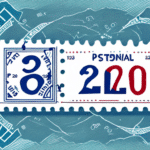Postage Stamp Increase in 2023: What You Need to Know
The United States Postal Service (USPS) announced a postage stamp increase in 2023, prompting significant discussions among American citizens and businesses. This article delves into the reasons for the increase, the new costs associated with postage stamps, the impact on various stakeholders, and strategies to adapt to these changes. We also explore alternative shipping options and the future of postal services in a digital age.
Reasons Behind the Postage Stamp Increase
Rising Delivery Costs
The USPS has identified several factors driving the need for a postage stamp increase. Primarily, the costs of delivering mail and packages have risen due to increased fuel prices, higher labor costs, and escalating transportation expenses. According to the USPS Office of Inspector General, operational costs have surged by approximately 4% annually over the past few years.
Pension and Healthcare Obligations
Another critical factor is the USPS's obligation to fund pension and healthcare benefits for its retirees. By law, the USPS must pre-fund retiree health benefits, a requirement that has placed substantial financial strain on the postal service. The postage stamp price increase aims to help meet these longstanding obligations, ensuring that USPS employees receive the benefits they are entitled to.
Cost Impact of the Postage Stamp Increase
New Postage Costs
While the exact cost of postage stamps post-increase has not been officially announced, projections suggest a 3-5% rise. Currently, a first-class letter costs 55 cents; with the increase, it may rise to approximately 57-58 cents. Package rates are also expected to see similar adjustments, though specific figures remain pending confirmation from the USPS.
Impact on Small Businesses
Small business owners who rely heavily on USPS services for shipping products to customers may face significant increases in their shipping expenses. This hike could lead to higher prices for consumers and potentially strain small businesses' financials, especially those operating with slim profit margins.
Effect on Nonprofit Organizations
Nonprofits that utilize direct mail campaigns as a fundraising tool will also be impacted by the postage stamp increase. The rise in mailing costs can affect their budgets, potentially limiting their outreach efforts unless alternative funding strategies are implemented.
Preparing for the Postage Stamp Increase
Assessing Current Shipping Expenses
Individuals and businesses should begin by evaluating their current postage expenditures to estimate the financial impact of the upcoming increase. Understanding current spending patterns allows for more informed budgeting and planning.
Exploring Alternative Shipping Options
Consider evaluating other shipping carriers, such as FedEx, UPS, or DHL, which may offer competitive rates or specialized services that could offset the increased USPS costs. Additionally, utilizing online postage services like Stamps.com or Endicia can provide discounted rates and simplify postage management.
Bulk Purchasing of Stamps
Purchasing postage stamps in bulk before the price increase takes effect is another effective strategy to mitigate cost impacts. Businesses and individuals who frequently send mail can benefit from the lower rates by stocking up early.
Adjusting Pricing Strategies
Small businesses may need to consider adjusting their pricing structures to account for the increased shipping costs. However, this should be done cautiously to avoid alienating customers. Transparent communication about the reasons for price adjustments can help maintain customer trust.
Historical and Global Context of Postage Stamp Increases
History of Postage Stamp Increases in the United States
The USPS has adjusted postage rates multiple times throughout its history to keep pace with economic and operational changes. The first postage stamp in the US debuted in 1847 at 5 cents. Significant increases occurred in 1971, 1974, and annually thereafter, reflecting factors like inflation and rising service costs. As of 2023, the first-class stamp is priced at 55 cents.
Postage Stamp Increases in Other Countries
The United States is not alone in adjusting its postage rates. Countries such as Canada, the United Kingdom, and Australia have also implemented similar increases. For instance, Canada raised its standard letter rate from $0.90 to $1.05 in 2020, while the UK saw a 6p rise in first-class stamp costs in 2021, reaching 85p.
The Future of Postal Services in a Digital World
Integration of Digital Technologies
As digital communication continues to rise, the USPS is exploring the integration of digital technologies to modernize its services. Innovations such as digital mailboxes, which allow users to manage their mail online, are being considered to meet the needs of a tech-savvy population.
Climate Change and Sustainability Efforts
Addressing climate change is also becoming a priority for postal services worldwide. The USPS is evaluating investments in more resilient infrastructure and exploring alternative delivery methods like electric vehicles and drones to reduce its carbon footprint and ensure reliable service amidst extreme weather conditions.
Policy Considerations and Alternative Shipping Options
Debating the Postal Service Monopoly
The structure of the USPS as a government-regulated monopoly ensures universal service access but raises questions about efficiency and innovation. Critics argue that introducing competition could drive improvements in service quality and pricing, while proponents highlight the importance of maintaining affordable postal services for all citizens.
Legal Framework for Postage Increases
The USPS must adhere to regulations set by the Postal Regulatory Commission (PRC) when adjusting postage rates. The PRC reviews and approves USPS pricing changes to ensure they are justified and compliant with relevant laws.
Exploring Alternative Shipping Options
In response to rising USPS costs, both individuals and businesses may explore alternative shipping solutions. Private carriers like FedEx and UPS offer various services that might better suit specific needs, such as international shipping or expedited delivery, potentially providing more cost-effective or efficient options.
Conclusion
The 2023 postage stamp increase by the USPS presents significant implications for individuals, small businesses, and nonprofit organizations. By understanding the reasons for the increase, assessing its impact, and adopting proactive strategies, stakeholders can effectively navigate these changes. Additionally, exploring alternative shipping options and staying informed about future postal service developments will be crucial in mitigating the financial effects of rising postage costs.




















